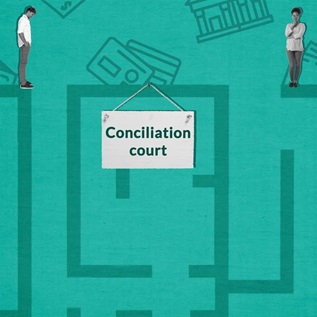Reforming Payday Loans Begins With Understanding How They Really Work
Each year, about 12 million Americans take out payday loans. Interest rates are very high, with APRs averaging 390 percent. By the time the loan is repaid, the fees involved typically have far exceeded the original loan amount. Fees paid on these loans total about $7 billion a year, burdening borrowers—many living paycheck-to-paycheck—who cannot afford such financial strain.
Stronger safeguards are coming. The U.S. Consumer Financial Protection Bureau is working on new regulatory standards. The prospect of tougher rules worries the payday lenders, who contend they will destroy their industry and leave borrowers without options. For the CFPB, the challenge is to strike a balance—make payday loans less burdensome for borrowers without cutting off access to small-dollar consumer credit.
Proposed regulations are expected later this year or early next. But inside the CFPB, leadership and senior staff are making key decisions about these rules now. As the regulators weigh their options, it’s important that they recognize and respond to some unfortunate but undeniable realities about payday loans.
Payday loans are often thought of—and marketed as—providing funds to handle unanticipated financial setbacks, such as a car repair or medical emergency. Watch a typical payday loan commercial, and you’ll see the loans advertised as a source of emergency cash. However, a 2012 Pew study found that only 16 percent of borrowers reported using a payday loan for an unexpected expense. The majority of borrowers (69 percent) used the loans for recurring expenses such as rent or credit card bills because most payday loan borrowers live paycheck to paycheck and struggle to make ends meet.
Another troubling reality is that payday loans often last well beyond the next payday—wreaking havoc on borrowers’ already fragile budgets. When fees are included, a typical payday loan payment takes one-third of a borrower’s next paycheck, an amount that most consumers who turn to payday lenders cannot afford. Faced with that unmanageable payment, borrowers instead pay an additional interest-only fee of about $55 to roll over the loan, staving off payment of the full amount until the next payday, and the next, and the next—all the while incurring additional fees. Today, the average payday loan borrower is in debt for nearly six months a year and pays an average of $520 in fees for $375 in credit.
An oft-heard objection to regulating payday loans is that borrowers like them and would have no other place to turn if officials attempt to correct the payday loan market. But that is not true. Research shows that while many borrowers initially appreciate their payday loan, most end up feeling taken advantage of as the financial burden of the loan becomes unmanageable. And, by a 2-1 ratio, borrowers want to see changes in how the loans work. For example, 72 percent favor more regulation of the industry, including giving borrowers more time to repay and offering them more affordable payments. A recent survey shows that 75 percent of the general public feels the same way. As one borrower said, “Give people a little breathing room and the opportunity to get ahead.”
Payday loans can be regulated to address these problems without denying customers access to the safe, transparent, and affordable loans they want. This was the case in Colorado, where lawmakers enacted legislation in 2010 requiring that all loans be repayable in installments at lower rates—making the state’s payday lending industry fairer and more efficient. Some stores closed, while others grew to accommodate more borrowers.
Overall, payday lenders in Colorado are serving about the same number of borrowers under the reform legislation but with better outcomes, including more affordable repayments, fewer defaults, and more reasonable loan durations.
Colorado should be a national model for federal regulators working on payday loan reforms. Borrowers will also be well-served if regulators design rules in a way that attracts more traditional lenders—banks and credit unions—to enter this market with lower-cost alternatives. Many people mistakenly assume that borrowers go to payday lenders because they are “unbanked,” meaning they’re outside the traditional banking system either by choice or by necessity. However, two of the key requirements for obtaining a payday loan are proof of income and a checking account. Thus, these customers, by definition, have to be “banked.”
The millions of people who each year turn to high-cost payday loans would be better off with more reasonable—and more fairly priced—installment loans that last a few months rather than just a couple of weeks. The marketplace will benefit, too, from a regulatory approach crafted to incentivize traditional banks and credit unions to offer more affordable installment loans. As the CFPB solidifies its approach, it should make both goals essential priorities.
Nick Bourke directs the small-dollar loans project at The Pew Charitable Trusts






